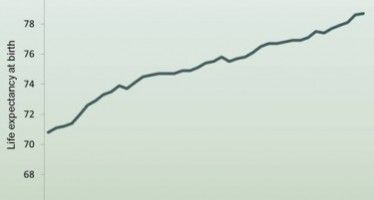Electricity tier changes, rate hikes bring higher energy costs
 With a recently approved proposal to hike electricity rates throughout the state and a new proposal from a local board to increase water and power rates, Californians are about to see a spike in energy costs.
With a recently approved proposal to hike electricity rates throughout the state and a new proposal from a local board to increase water and power rates, Californians are about to see a spike in energy costs.
CPUC changes tier system, implements minimum charge
Last week, the California Public Utilities Commission unanimously approved changes that would move electricity rates from four to two tiers.
“Most residential customers in California will see their electricity bills increase under a new rate structure passed … by state regulators,” reported ABC 7 News. The new plan essentially “raises rates on more efficient users while giving a break to big energy users.”
The tier overhaul was prompted by utility companies and regulators looking to charge based on the actual cost of providing power. According to the San Jose Mercury News, proponents of this new plan argued, “Low-usage customers have essentially been subsidized by high-usage ratepayers under the current system, which has been in place since the electricity crisis 15 years ago, when there was a push to encourage conservation.”
PUC President Michael Picker said in a prepared statement, “Rate reform is necessary to move us into a future where consumers have the tools they need to manage their own energy use, and can install new, clean technologies such as storage and renewables.
“Our decision helps align rates with the actual cost of service. It also builds a more nimble rate structure to allow us to add more and more renewables to the grid, and to encourage customers to use energy when we have excess renewables and to cut back during peak periods.”
The changes would also introduce the following items:
- Time of use rates: By January 1, 2019, “residential customers will default to time of use rate … but can opt to remain on the tiered rate structure. Time of use rates reflect predictable daily changes in the cost of electricity service, and enable customers to reduce usage during peak hours when electricity prices are higher.”
- Tier flattening glidepath and new rate structure: “The rate structure moves from four to two tiers with a 25 percent differential by January 1, 2019, and with a Super User Electric (SUE) surcharge introduced in 2017. … Some high usage customers currently paying above the cost of service will experience bill reductions, while some lower usage customers paying below the cost of service will experience bill increases.”
- Fixed charges/Minimum bill: “The utilities must implement a minimum bill beginning in 2015 of $10 for non- 3 CARE customers and $5 for CARE customers.”
LADWP floats rate hike proposal
In addition, the Los Angeles Department of Water and Power on Wednesday also proposed rate hikes over the next five years.
According to CBS Los Angeles, the proposal would “raise more than a billion dollars for infrastructure repairs, including broken underground pipes and power poles.” The $1.3 billion in new funds would be split, with $230 million going to water projects and $900 million for power projects.
Rates would be increased across all spectrums of energy and water users. “If approved, low water and power users would see an increase of 2.4 percent or about $2 more a month, while average users would see a 3.4 percent increase equating to about $5 more per month. High users, though, would see a 5.4 percent raise, which comes out to about $18 a month.”
The DWP board will not vote on the increase until October; even after approval from the board, it must also be approved by the L.A. City Council and Mayor Eric Garcetti.
In the meantime, the DWP has planned four months of public outreach at business groups, neighborhood councils and other areas. Southern California Public Radio notes that the DWP “must overcome bad publicity from its poor oversight of $40 million given to two trusts run by its employee union, a recently-discovered embezzlement of several million dollars by an employee, and the botched rollout of its new customer billing system.”
Related Articles
O.C. Sheriff Hutchens allows more conceal-carry permits
Orange County Sheriff Sandra Hutchens commendably is expanding the ranks of those able to get conceal-carry permits. This follows a ruling by
Privatize fire departments
John Seiler: We pay massive taxes to subsidize, among other things, massive pay and pensions for firemen. In Orange County,
Longevity breakthroughs make gov pensions even more of a gold mine
On Sunday the Drudge Report sent Twitter abuzz with the report of a hugely significant breakthrough on aging and longevity:




